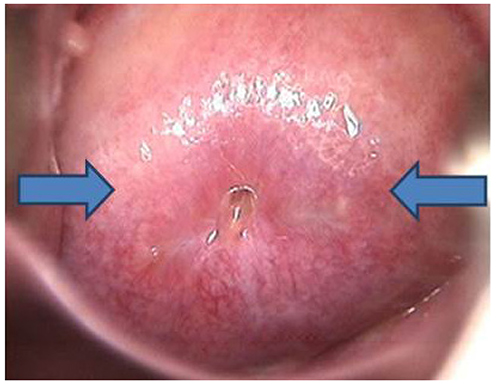Obstet Gynecol Sci.
2017 Jan;60(1):87-91. 10.5468/ogs.2017.60.1.87.
Delayed hemorrhage effect of local anesthesia with epinephrine in the loop electrosurgical excisional procedure
- Affiliations
-
- 1Institute of Women's Life Medical Science, Women's Cancer Clinic, Department of Obstetrics and Gynecology, Yonsei University College of Medicine, Seoul, Korea. nahmej6@yuhs.ac
- KMID: 2383213
- DOI: http://doi.org/10.5468/ogs.2017.60.1.87
Abstract
OBJECTIVE
The aim of this study was to investigate factors preventing delayed hemorrhage after the loop electrosurgical excisional procedure (LEEP).
METHODS
Medical records of patients who underwent LEEP at one university affiliated hospital from October 2013 to January 2015 were reviewed. Patients with or without delayed hemorrhage were classified. LEEP was performed either in an operating room under general anesthesia or in a procedure room with local anesthesia in the outpatient clinic. Delayed hemorrhage was defined as excisional site bleeding occurring between 1 and 30 days after the LEEP requiring intervention such as electro-cauterization, gauze packing, or application of another hemostatic agent.
RESULTS
During the study period, 369 patients underwent LEEP. Twenty-three (6.2%) patients with delayed hemorrhage returned to our hospital either to the outpatient clinic or to the emergency unit. A third of the population (103, 27.9%) underwent LEEP in the operating room under general anesthesia without injection of local anesthesia. The remaining patients (266, 72.1%) underwent LEEP with local anesthesia (lidocaine HCl 2% with epinephrine 1:100,000) in the office procedure room. Patients given local anesthesia including epinephrine had significantly lower delayed hemorrhage compared to patients with general anesthesia without injection of local anesthesia (P=0.001). Hemostats, such as fibrin glue or patch, were used for the majority of patients (346, 93.8%) during the procedure. However, using hemostats was not statistically associated with delayed hemorrhage (P=0.163).
CONCLUSION
Local anesthesia with the powerful vasoconstrictor epinephrine is effective not only to control perioperative bleeding, but also to prevent delayed hemorrhage after LEEP.
MeSH Terms
Figure
Reference
-
1. Guntupalli SR, Mutch DG. Abnormal cervical cytology and human papillomavirus. In : Glass RH, Curtis MG, Linares ST, Antoniewicz L, editors. Glass office gynecology. 7th ed. Philadelphia (PA): Lippincott Williams & Wilkins;2014. p. 83–84.2. Martin-Hirsch PP, Paraskevaidis E, Bryant A, Dickinson HO. Surgery for cervical intraepithelial neoplasia. Cochrane Database Syst Rev. 2013; (12):CD001318.3. Oyesanya OA, Amerasinghe C, Manning EA. A comparison between loop diathermy conization and cold-knife conization for management of cervical dysplasia associated with unsatisfactory colposcopy. Gynecol Oncol. 1993; 50:84–88.4. Luesley DM, McCrum A, Terry PB, Wade-Evans T, Nicholson HO, Mylotte MJ, et al. Complications of cone biopsy related to the dimensions of the cone and the influence of prior colposcopic assessment. Br J Obstet Gynaecol. 1985; 92:158–164.5. Leiman G, Harrison NA, Rubin A. Pregnancy following conization of the cervix: complications related to cone size. Am J Obstet Gynecol. 1980; 136:14–18.6. Luesley D, Shafi M, Finn C, Buxton J. Haemorrhagic morbidity after diathermy loop excision: effect of multiple pre-treatment variables including time of treatment in relation to menstruation. Br J Obstet Gynaecol. 1992; 99:82–83.7. Martin-Hirsch PP, Bryant A. Interventions for preventing blood loss during the treatment of cervical intraepithelial neoplasia. Cochrane Database Syst Rev. 2013; (12):CD001421.8. Ferlay J, Bray F, Pisani P, Parkin DM. GLOBOCAN 2009: cancer incidence, mortality, and prevalence worldwide. Lyon: IARC Press;2009.9. Richart RM, Barron BA. A follow-up study of patients with cervical dysplasia. Am J Obstet Gynecol. 1969; 105:386–393.10. Richart RM. Cervical intraepithelial neoplasia. Pathol Annu. 1973; 8:301–328.11. Waxman AG, Chelmow D, Darragh TM, Lawson H, Moscicki AB. Revised terminology for cervical histopathology and its implications for management of highgrade squamous intraepithelial lesions of the cervix. Obstet Gynecol. 2012; 120:1465–1471.12. Prendiville W, Cullimore J, Norman S. Large loop excision of the transformation zone (LLETZ): a new method of management for women with cervical intraepithelial neoplasia. Br J Obstet Gynaecol. 1989; 96:1054–1060.13. Murdoch JB, Grimshaw RN, Morgan PR, Monaghan JM. The impact of loop diathermy on management of early invasive cervical cancer. Int J Gynecol Cancer. 1992; 2:129–133.14. Wright TC Jr, Gagnon S, Richart RM, Ferenczy A. Treatment of cervical intraepithelial neoplasia using the loop electrosurgical excision procedure. Obstet Gynecol. 1992; 79:173–178.
- Full Text Links
- Actions
-
Cited
- CITED
-
- Close
- Share
- Similar articles
-
- A case of vesicovaginal fistula after loop electrosurgical excisional procedure
- Current Concepts of Cervical Conization
- Recurrence of Dysplasia after Loop Electrosurgical Excision Procedure
- An Experimental Study about the Effect of Local Anesthesia on Skin Flap Survival
- Cardiac arrest induced by the local infiltration of epinephrine during desflurane anesthesia: A case report


